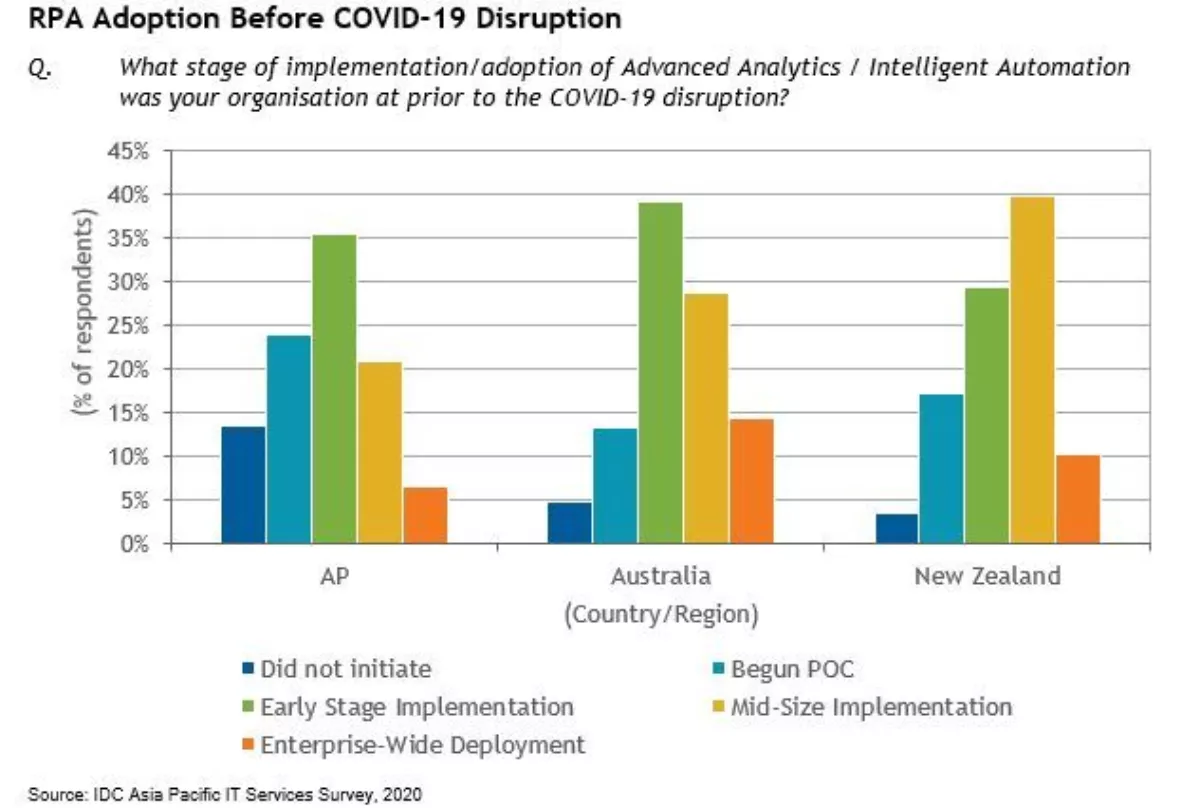
Automation key to helping ANZ firms 'flatten recovery curve' - IDC
Automation could be to flattening the recovery curve, as organisations shift from the 'crisis mode' caused by the COVID-19 pandemic to 'recovery mode'.
That's according to IDC, which recently polled businesses across Australia and New Zealand (ANZ) on how they are using automation before the pandemic, and now.
The Asia Pacific IT Services Survey 2020 found that ANZ businesses are well ahead of the curve, particularly in terms of robotic process automation (RPA).
RPA is designed to automate repetitive tasks without human intervention. It is most commonly used in areas such as network automation, fraud detection, payroll, and data manipulation.
"COVID-19 will be the catalyst for many ANZ organisations to expand their RPA repertoire", says IDC ANZ senior research manager Monica Collier.
"They may extend existing RPA solutions more widely across the enterprise or deploy new RPA solutions," she continues.
IDC uses a Five Stages of Recovery model to track how businesses move through various recovery stages. These stages include the COVID-19 crisis, economic slowdown, recession, return to growth, and the next normal. This is set out in IDC's COVID-19 Impact on IT Spending Survey, Wave 5, June 2020 report.
In the crisis stage, businesses focus on continuity as they deploy work-from-home, self-service and contactless solutions.
The economic slowdown phase requires businesses to focus on cost optimisation - conserving cash, reducing costs, and implementing digital-led operating models that can adapt to social distancing and lockdowns.
During the following recessions, businesses focus on resiliency for employee management, capacity management, digital collaboration, and other areas. This is the prime stage for RPA deployment.
The return to growth stage enables businesses to make targeted strategic investments.
The next normal paves the way for the future enterprise. It is where changes become permanent and the organisation does not fall back to pre-COVID-19 operating procedures.
According to IDC, in New Zealand, Australia, and worldwide are currently riding the economic slowdown, recession, and return to growth phase. These organisations are focused on cost optimisation, business resiliency, and targeted investments.
More businesses are also incorporating RPA solutions as they move into recovery.
Of ANZ businesses that have planned or deployed RPA solutions, around half have already reached mid-stage or enterprise-wide adoption before COVID-19 struck, compared to a quarter for the rest of Asia Pacific.
According to IDC, intelligent automation will help businesses to progress with digital transformation initiatives.
Automation is able to help organisations to flatten the recovery curve and move faster into a growth phase. This is important as businesses need to adapt quickly if they are to remain agile and disruptive.
IDC states that businesses should investigate how RPA can increase business resiliency.
"Changing your business by using automation is much faster than changing your business using people," says Collier.


